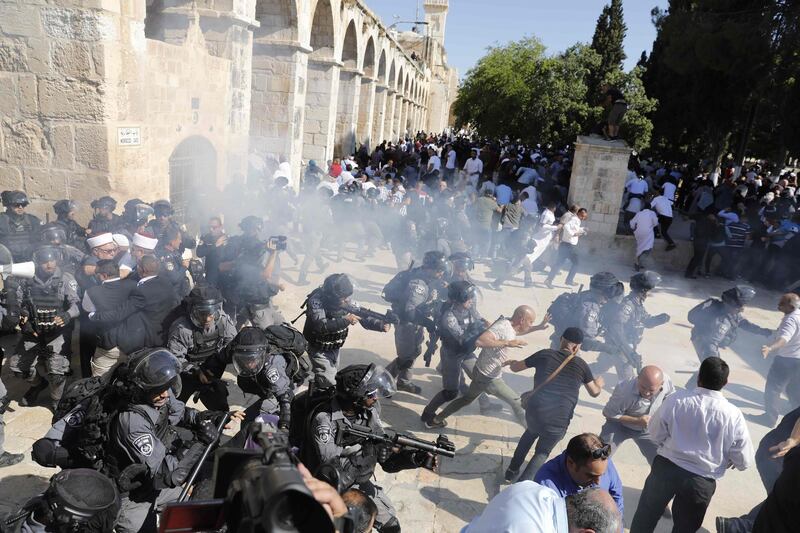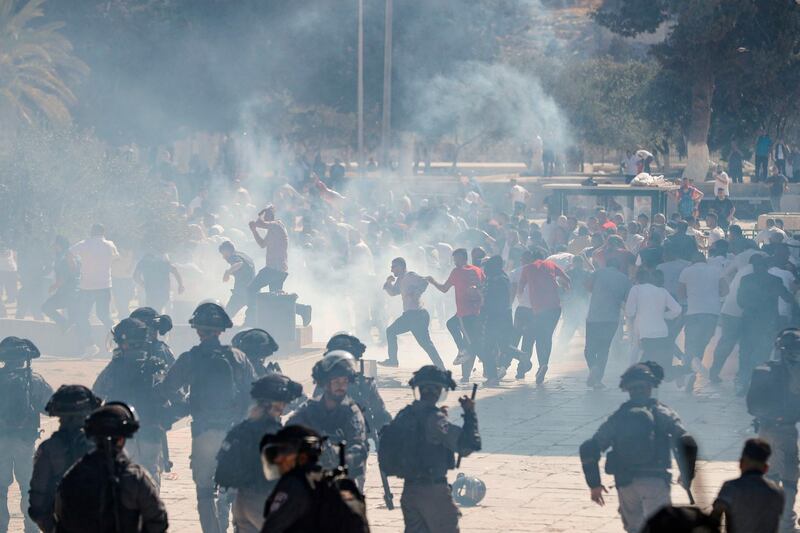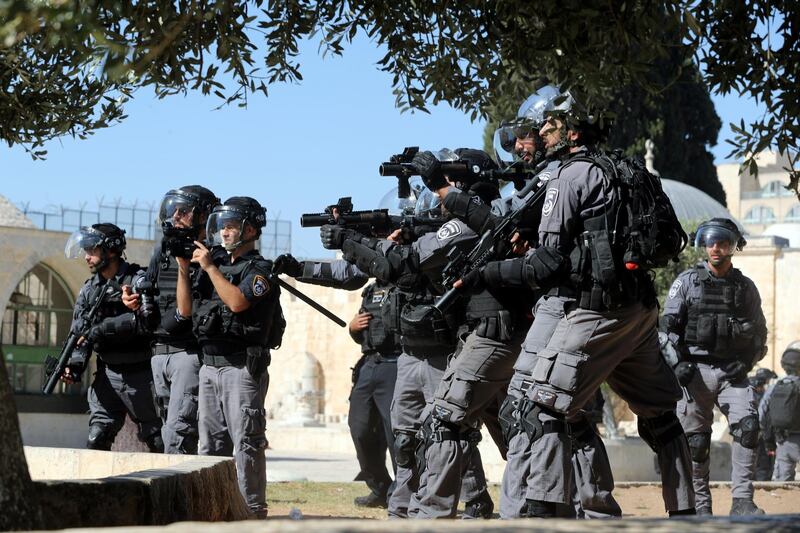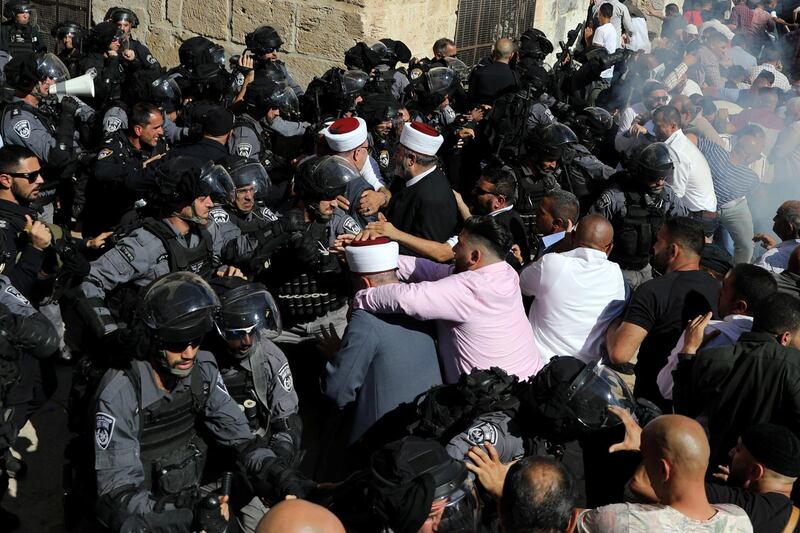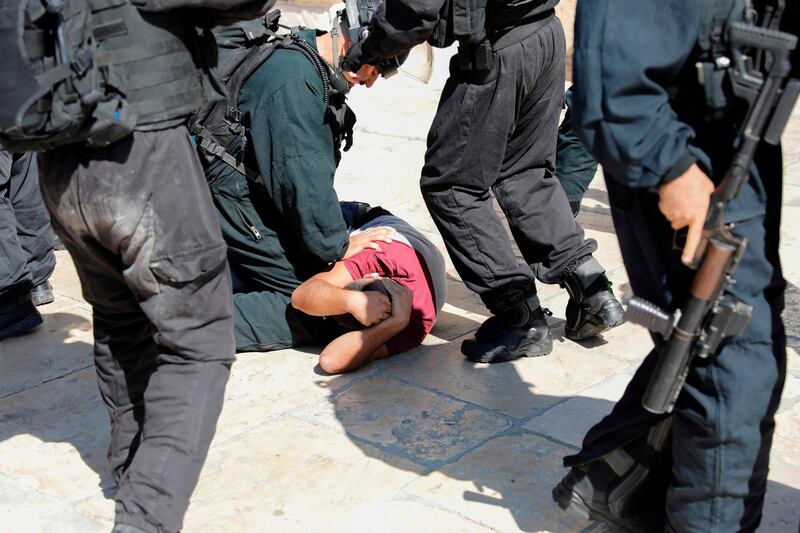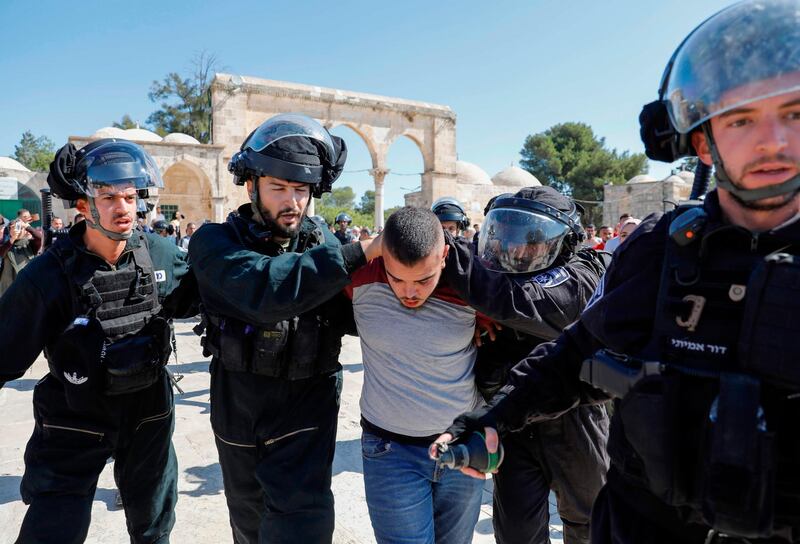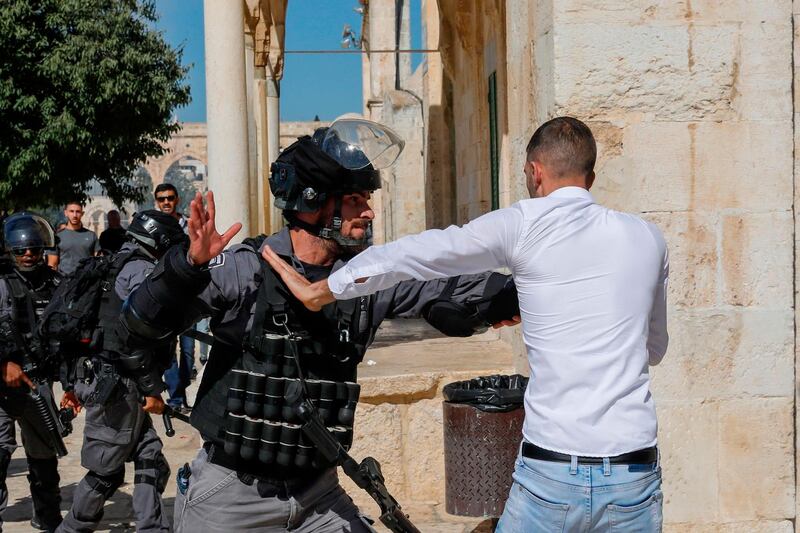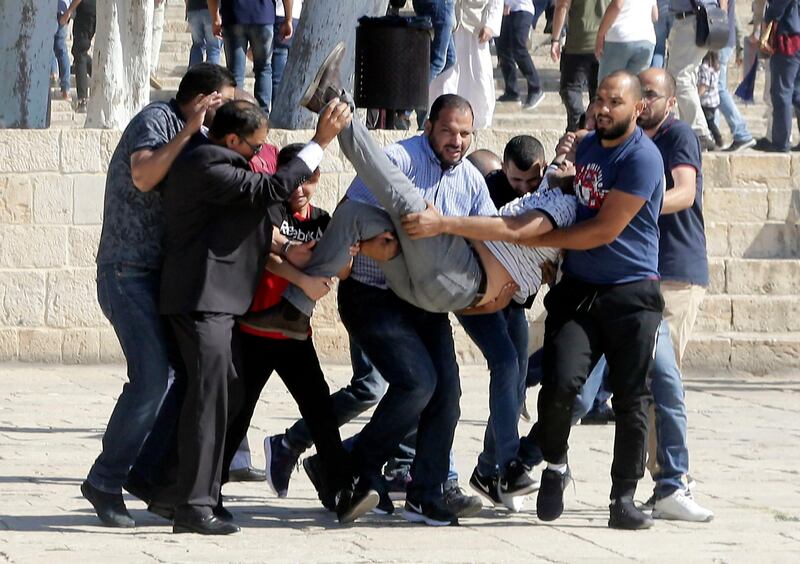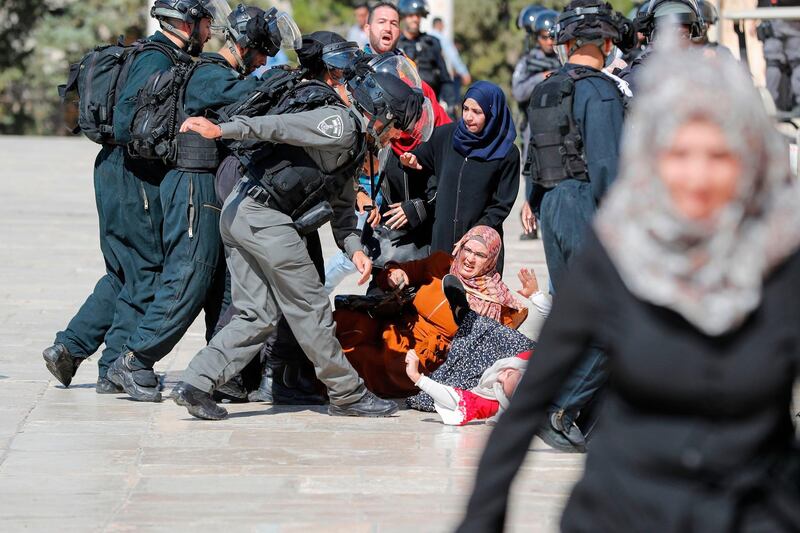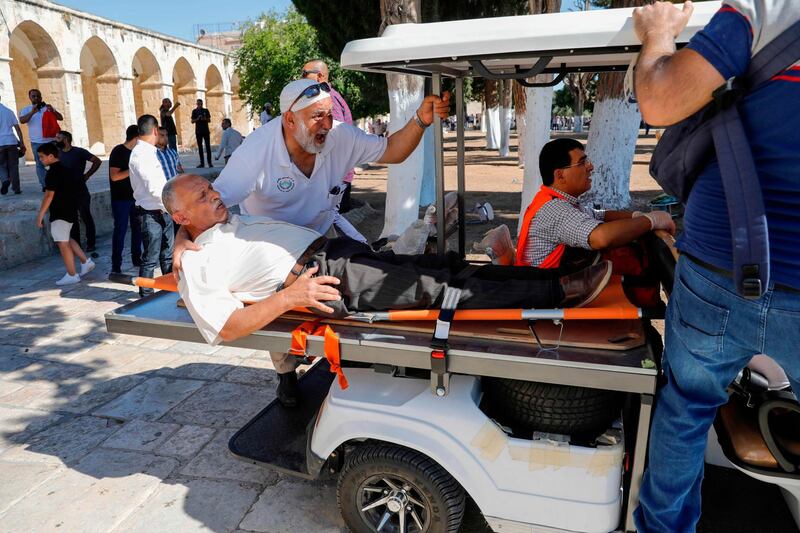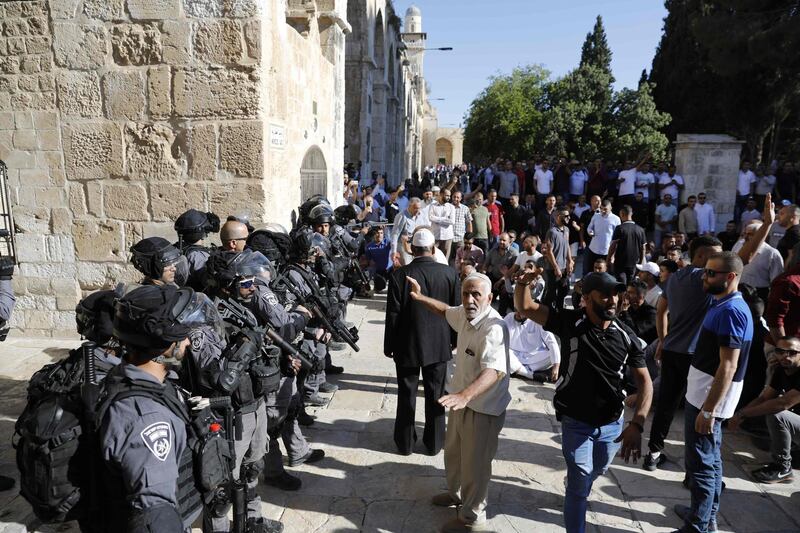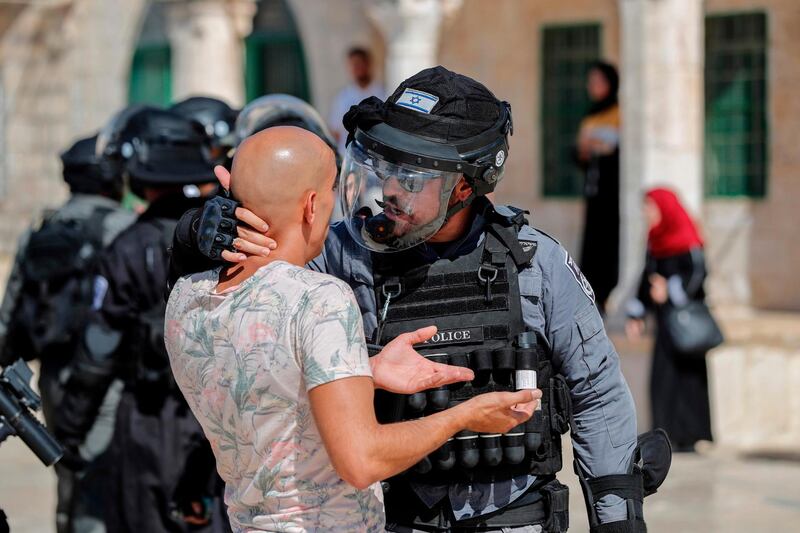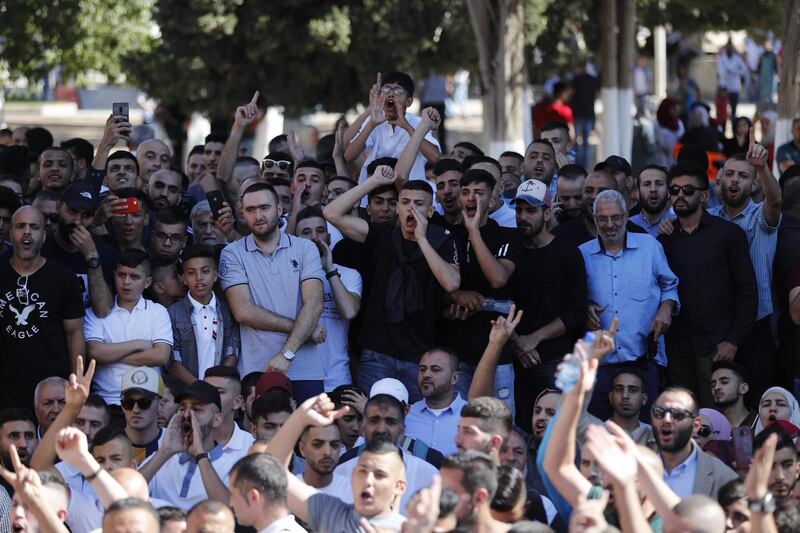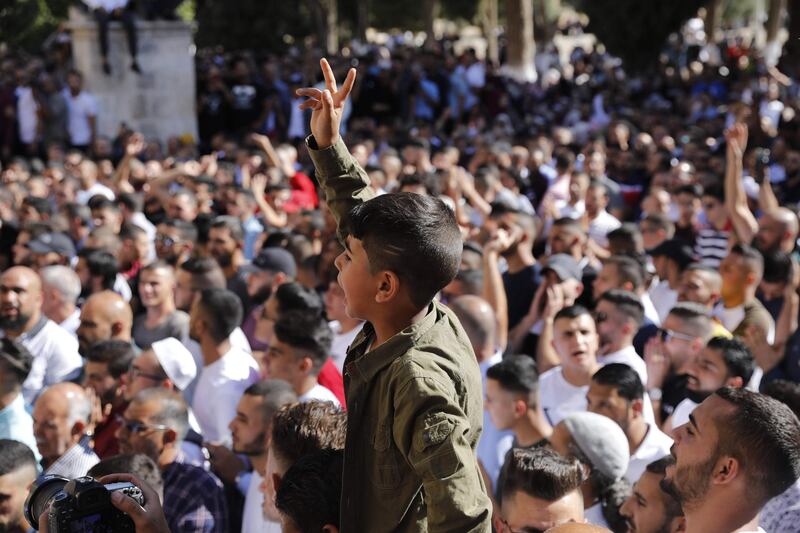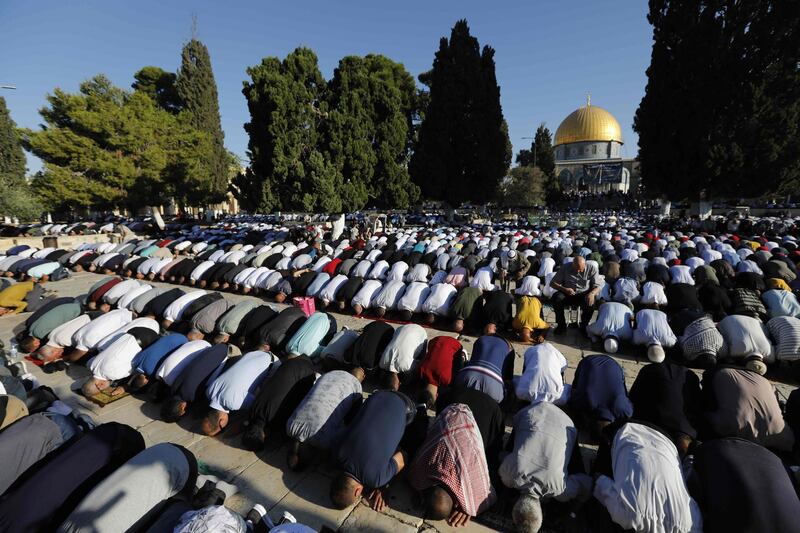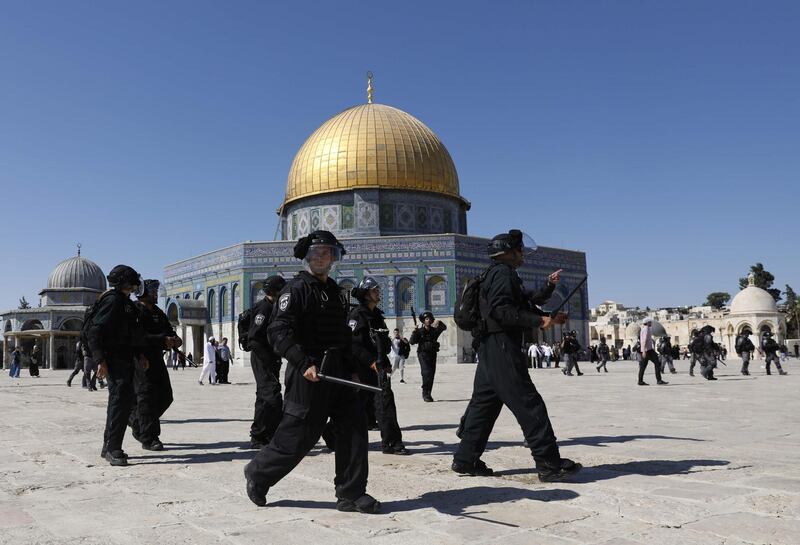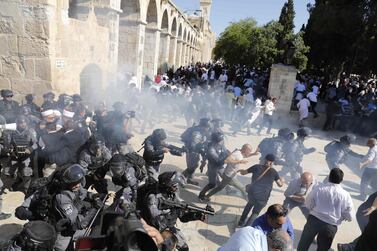Clashes have again flared up around Al Aqsa mosque compound with police using sound grenades to disperse Palestinian protesters on Sunday.
But the site has a long and complex history that gets to the heart of the Palestinian-Israel conflict.
The Second Intifada from September 2000 until February 2005 erupted after Ariel Sharon made a visit to the complex.
Located in the heart of the old city of Jerusalem, the complex is known in Arabic as Haram Al Sharif (only the mosque itself is called Al Aqsa).
The site is revered as the third holiest in Islam after the Kaaba in Makkah and the Prophet's Mosque in Madinah. According to the Quran and accompanying hadith, the Prophet Mohammed travelled on the back of a winged mule-like beast called Buraq to “the furthest mosque” where he led the other prophets in prayer. The site of this is believed to have been Al Aqsa in Jerusalem.
However, Jews too revere the site where they believe the Second Temple stood after around 516 BC until it was destroyed by the Romans in 70 AD.
Today, the site is also seen by Palestinians as a symbol of their fight against the Israeli occupation and their battle for an independent state. As such, the image of the famous golden topped shrine (called Qubbat Al Sakhrah or Dome of the Rock) features in a lot of Palestinian national imagery from logos to banners and posters.
Israel occupied the old city of Jerusalem in the 1967 Arab-Israeli War and later annexed the area in a move not recognised under international law. However, Palestinians and most proponents of a two-state solution, support east Jerusalem as the site of the future capital of an independent Palestine.
Jordan still retains a special role in overseeing the site as well as other religious buildings in Jerusalem. In 2013, Jordan and the Palestinian Authority signed a deal to formalise a verbal agreement that dated back to 1924 that gave Amman custodianship over the holy sites in Jerusalem.
Day-to-day operations are run by an Islamic trust but Israel has largely tried to ensure that the use of the Haram Al Sharif is not changed or developed. As such, a number of unused parts of the site are closed off and repairs are slowed down or rejected.
All Muslims regardless of nationality are allowed to enter and pray at Al Aqsa mosque. While Christians and Jews are allowed to tour the complex they are forbidden from praying.
However, rumours and reports that Israelis or Jews who enter the complex are attempting to prey can lead to clashes and settlers have on several occasions stormed the complex.
Palestinians have accused right-wing Israeli groups of trying to erode the special status of Al Aqsa compound although the Israeli government has said it has no interested in such a change.
Around the site, Israel mostly uses Druze members of its security forces so as to keep sectarian tensions to a minimum. However, clashes between Palestinian protesters and police are not uncommon.
There were protracted and significant protests and clashes in 2017 when Israel installed metal detectors at the site after two policemen were stabbed in the courtyard.
The Israeli authorities closed the site and prevented Friday prayers for the first time in 17 years and later reopened it with increased security and checks. After more than a week of continuous protest, the Israeli government relented and announced the removal of the detectors.
